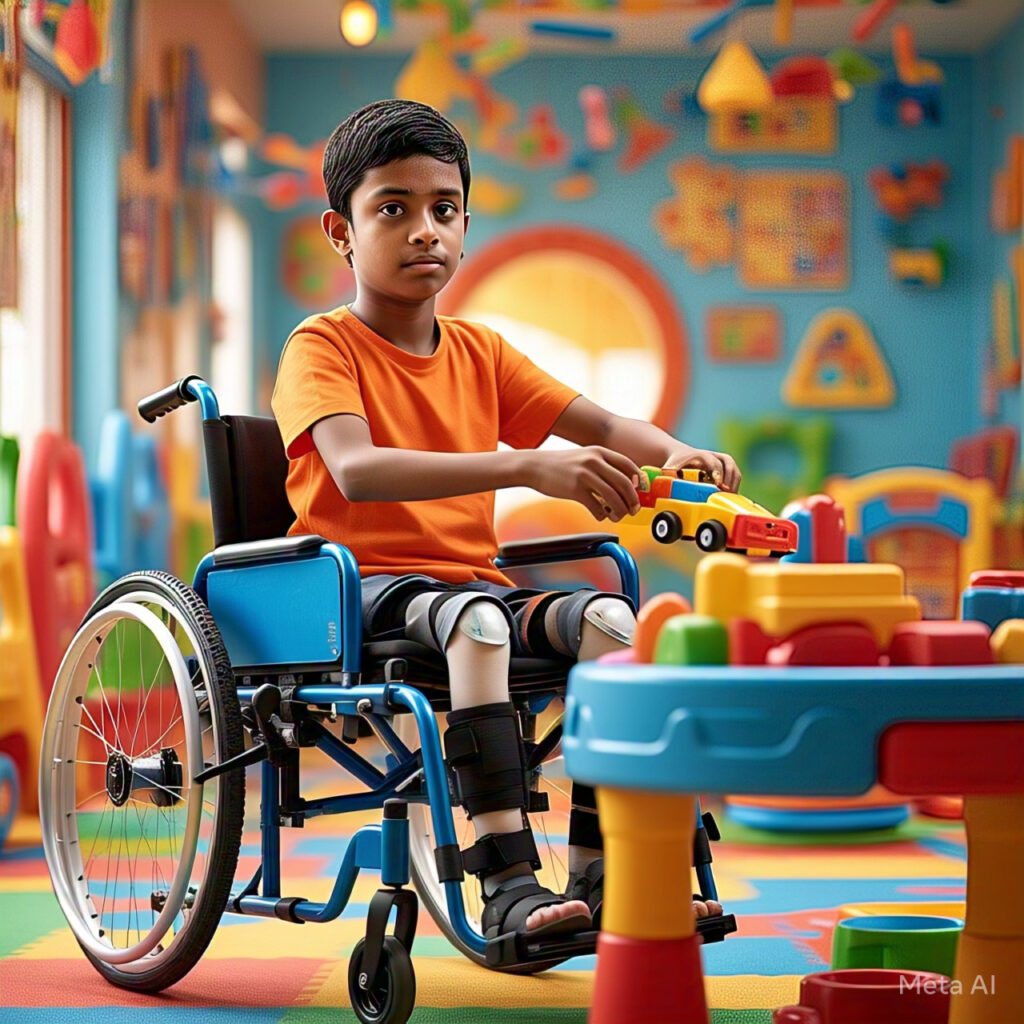Cerebral Palsy
What Is Cerebral Palsy?
Cerebral Palsy (CP) is a group of neurological disorders that affect movement and muscle coordination. It is caused by brain damage or abnormal brain development, typically occurring during pregnancy, birth, or shortly after birth. CP impacts a person’s ability to control their muscles, leading to difficulties with movement, posture, and balance. The severity of symptoms varies, ranging from mild motor impairments to more severe physical and developmental disabilities. While CP does not worsen over time, the effects can impact daily life and may require lifelong therapy, assistance, and support. It can also be associated with other conditions like intellectual disabilities, seizures, and vision or hearing problems.
Cerebral Palsy (CP) is a neurological disorder that affects muscle tone, posture, movement, balance, and coordination. It is caused by an injury to the developing brain, typically before or during birth, or shortly after. This condition can lead to difficulties with motor skills, and in some cases, is also associated with other issues such as epilepsy, speech and vision problems, intellectual disabilities, and behavioral challenges.
Key Points about Cerebral Palsy:
- Brain Injury: CP is caused by brain damage or abnormal brain development that impacts movement control.
- Muscle and Movement Issues: Affects muscle tone, posture, balance, and coordination.
- Associated Conditions: Often linked with seizures (epilepsy), speech difficulties, vision problems, and cognitive challenges.
- Varied Severity: Symptoms can range from mild motor difficulties to more severe impairments requiring ongoing care.
- Lifelong Condition: While CP doesn’t worsen over time, its effects can impact daily activities throughout life.

Causes of Cerebral Palsy (CP)
- Prenatal Factors (Before Birth):
- Infections during pregnancy
- Maternal health issues
- Premature birthor low birth weight.
- Insufficient oxygen supplyto the baby during pregnancy (hypoxia).
- Genetic factorsmay also play a role in some cases.
- Perinatal Factors (During Birth):
- Birth complications, such as umbilical cord problems, placenta issues, or prolonged labor.
- Trauma during deliveryleading to brain injury or lack of oxygen.
- Postnatal Factors (After Birth):
- Brain infectionslike meningitis or encephalitis in early childhood.
- Severe jaundiceshortly after birth leading to brain damage.
- Head injuriesin infancy or early childhood.
Book An Appointment
Signs of Cerebral Palsy:
- Delayed Motor Skills: Difficulty with movement, such as trouble holding the head up, sitting, crawling, or walking at the usual age.
- Abnormal Muscle Tone: Muscles may be too stiff (spasticity) or too loose (hypotonia), leading to poor posture, balance issues, and difficulty controlling movements.
- Coordination and Balance Issues: Difficulty coordinating movements, which may result in tremors, unsteady walking, or clumsiness.
These signs can vary in severity and may become more evident as the child grows. Early intervention can significantly help in managing the symptoms.
Types of Cerebral Palsy?
- Spastic Cerebral Palsy: Characterized by stiff muscles and difficulty moving, affecting one or more parts of the body.
- Dyskinetic Cerebral Palsy: Involves involuntary movements, such as twisting or jerking, with fluctuating muscle tone.
- Ataxic Cerebral Palsy: Causes balance and coordination issues, resulting in shaky movements and difficulty with fine motor skills.
Mixed Cerebral Palsy: A combination of two or more types, affecting different parts of
How Cerebral Palsy is Diagnosed
- Physical and Neurological Examination: The doctor evaluates the child’s muscle tone, coordination, posture, and reflexes.
- Medical History: Review of pregnancy, birth, and any complications like infections or injuries after birth.
- Brain Imaging: MRI or CT scans help identify brain abnormalities or damage.
- Genetic Testing: Done if needed to rule out genetic conditions that may cause similar symptoms.
- Developmental Screening: Observing the child’s motor, speech, and behavioral development to identify delays or concerns.
Treatment at Wonder Kidz
While cerebral palsy may not have a cure, we focus on managing its symptoms to enhance your child’s abilities. At Wonder Kidz, our team of skilled therapists and specialized support staff are equipped to provide comprehensive care. We offer a holistic, multidisciplinary approach, with treatment plans developed after a thorough evaluation of your child’s needs. Our team is dedicated to providing the best support for both children with cerebral palsy and their families, ensuring a path toward greater independence and quality of life.
- Therapies utilized are physiotherapy, occupational therapy, and speech therapy & behaviour Therapy.
- Consequently, we will use orthopedic devices like braces to support the child fro mobilization.
Early and consistent therapeutic interventions in a well-equipped center can significantly improve motor function, independence, and quality of life for children with cerebral palsy.


When is a child prone to get cerebral palsy?
If the child is born prematurely, had a delayed first cry, or had a head injury or hemorrhage, then they have a risk of developing cerebral palsy later in life.
What is the life expectancy for children with cerebral palsy?
Children with mild cerebral palsy have a very high survival rate. It will reduce with increasing severity. With regular medications, therapies, and follow-ups with doctors, a child with cerebral palsy will be able to lead a fulfilling life.
Can Cerebral Palsy be inherited?
No. Cerebral Palsy does not cause any genetic mutation and has no chance to be passed down to further generations.
Can Cerebral Palsy be cured?
CP is a lifelong condition, but early intervention, therapy, and medical support can significantly improve a child’s movement, communication, and independence. Treatments like physiotherapy, occupational therapy, speech therapy, and assistive devices help children manage symptoms and enhance their quality of life.
